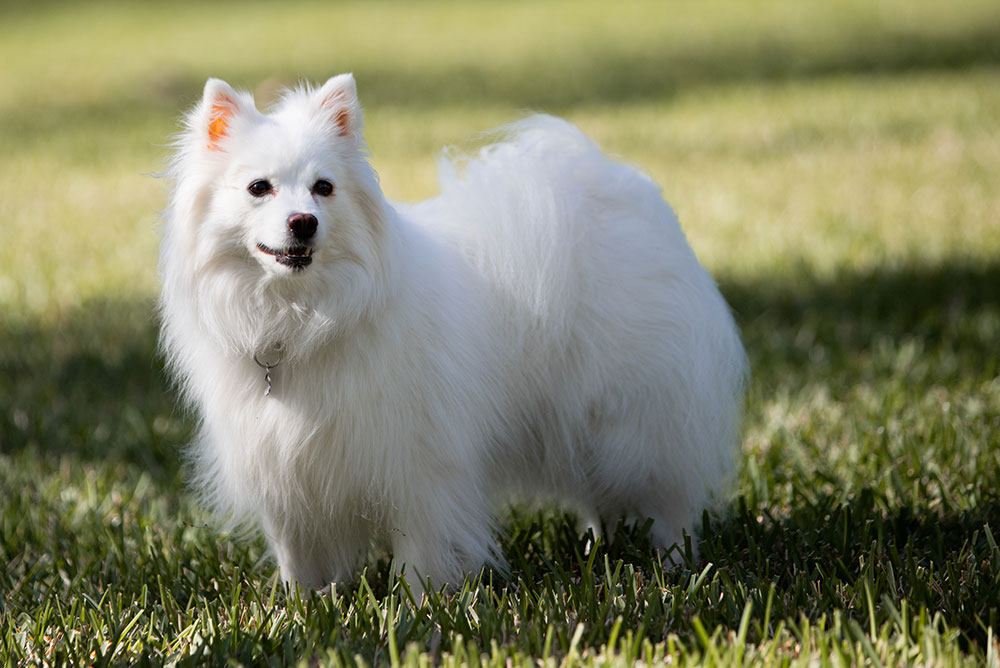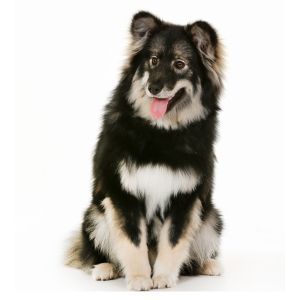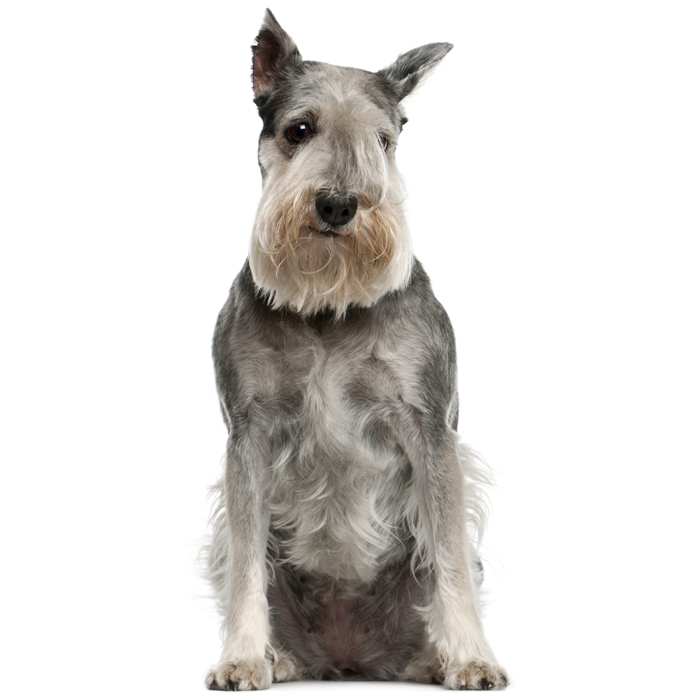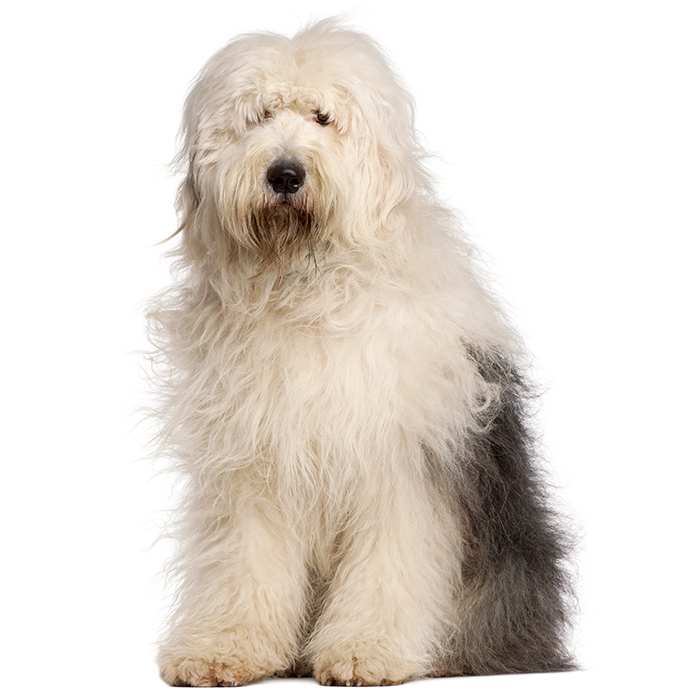American Eskimo Dog
Eager to please, intelligent, active
This breed has a low probability of having health issues in its lifetime, hence it is one of the more affordable breeds to insure.

Is this breed right for you?
Try our breed selector quiz to find out your best matching breed!
Insuring a American Eskimo Dog?
Get award-winning cover with more benefits and up to 80% of eligible vet bills reimbursed. Find out about your cover options.
Get a quick quoteBreed Overview
The pure white American Eskimo Dog, also known as the “Eskie” and Eskimo Spitz, is a Spitz breed that originated in Germany and was originally called the “German Spitz”. Although diminutive in size, the Eskie is a bold, strong and agile dog who moves with a well-balanced and smooth gait. Selective breeding has resulted in three different sizes: Toy (22–30 cm), Miniature (30–38 cm) and Standard (38–48 cm).
With a fluffy white coat, erect, triangular ears, and black nose, eye rims and lips, the American Eskimo Dog looks very much like a small Samoyed. His dark to medium brown eyes are not fully round, but slightly oval. He has a compact and muscular body and a smiling face with an alert and intelligent expression. His plumed tail is carried loosely over his back.
The Eskie’s most distinctive feature is undoubtedly his dense double coat, which is white or biscuit cream. It stands off the body, is water resistant, and insulates against the cold. The undercoat is short and dense, with longer guard hairs growing through it to form the straight outer coat. For extra warmth, it is thicker and longer around the neck and chest – giving male Eskies an impressive lion-like ruff – as well as over the rump and hind legs, while his small and densely coated ears are also protected from the cold.
Although Eskies shed almost constantly, the coat is fairly easy to keep clean. A thorough brushing two to three times a week will remove most dead hairs before they can be shed and help to prevent matting. The oil on an Eskie’s fur prevents dirt from adhering, so a good brushing is usually enough to remove it; bathing is only required occasionally.
Intelligent and curious, active and energetic, the Eskie requires lots of exercise and mental challenges. A vigorous daily workout, a securely fenced yard and a variety of toys will help provide physical and mental stimulation to keep him out of trouble during his youth. However, once he passes middle age, he often become more sedate.

Personality and Temperament
American Eskimo Dogs are social animals who insist on being part of family life. They are friendly, loving, playful and eager-to-please, making them excellent companions and all-rounders. They have a strong bond with their humans and enjoy working closely with them. Despite their love of cold weather and the outdoors, Eskies are indoor dogs who forms strong bonds with their people and are happiest interacting with them; even off-lead, they usually choose to stay within sight of their humans.
The Eskie can be wary or mistrustful of strangers, sounding a warning bark at their arrival but usually welcoming them after an introduction. He is defensive of his home and family, but not aggressive. He is usually well-behaved and obedient and is child-friendly; however, he should be supervised around other pets and small children.
This breed is intelligent, alert, determined, resourceful and independent. They enjoy having a job to do, and they learn new tasks quickly and will attempt to accomplish any task asked of them. A highly trainable breed, Eskies learn new commands quickly, sometimes even by just watching other dogs. For these reasons, combined with their desire to please, they were often trained for performing dog acts in the days of the travelling circus.
The Eskie is one of the most versatile breeds, excelling in herding, agility, tracking, obedience, service and therapy work. However, he can become bored and destructive if left without a task to do or something to occupy him. He should live inside and shouldn’t just be left out in the yard by himself all day. He needs consistent exercise and training to avoid negative behaviours such as separation anxiety, excessive barking, aggressiveness and over-guarding.
Common American Eskimo Dog Diseases & Conditions
Symptoms, diagnosis and treatment
- Hip Dysplasia: Although more common in large-breed dogs, Canine Hip Dysplasia is a hereditary condition that also occurs in smaller dogs such as the American Eskimo. During the growth stage, the hip doesn’t form correctly, resulting in a ‘loose’ joint. This can cause pain and dysfunction, and over time can lead to arthritis, muscle atrophy and limited mobility. Maintaining a healthy weight can help reduce the amount of stress on the affected joint.
- Patellar luxation: Most common in toy and miniature breeds, Patellar luxation occurs when the kneecap is dislocated from its correct anatomical position in the groove of the thigh bone. This condition occurs more often in female dogs. The dog feels pain or discomfort only at the moment the kneecap slides out of position. Once it is out of position, sudden lameness, occasional skipping, or abnormal hindlimb movement will typically occur. Depending on the severity of the condition, arthritis may set in to the affected joint.
- Progressive retinal atrophy (PRA): The retina is the light-sensitive layer at the back of the eye. In PRA, this part of the eye gradually wastes away as a result of a genetic mutation inherited from the dog’s parents. This condition leads first to night blindness and then to total blindness. Dogs that are unaffected may still be carriers of the faulty gene and can then pass it on to their offspring.
- Diabetes mellitus: This is a condition relating to the insufficient production of insulin (Type 1 diabetes) or incorrect response of the body’s cells to insulin. Some breeds appear to be predisposed to diabetes, while some medical conditions are associated with diabetes, including Cushings, pancreatitis and obesity. An affected dog will be constantly hungry. Daily insulin injections may be required to manage the condition.
Not all conditions are covered by Pet Insurance. For details of Bow Wow Meow Pet Insurance cover, refer to the Product Disclosure Statement.

History
The American Eskimo Dog originated in Germany and is a member of the “Spitz” family of breeds, with the same ancestors as many of the Nordic breeds of today, including the white German Spitz, the white Keeshond, the white Pomeranian, and the Volpino Italiano (white Italian Spitz). Spitz breeds were found throughout Europe during the Middle Ages, and there are ancient artefacts that depict breeds of dogs with the characteristic tail curled over the dog’s back dating back to 4,000 BC.
Originally bred in Germany as a multipurpose working dog on the farm, the German Spitz was an intelligent, thinking dog who was an essential part of the farmer’s life, not only keeping away predators but knowing the difference between its own livestock and trespassing livestock. When waves of German immigrants settled in the American Midwest in the 1800s, they brought their beloved Spitz with them to use in the same way as they had previously done in the old country; as all-around farm dogs.
By the latter years of the 19th century, although never bred to be a circus dog, show business was beckoning. The Spitz’s historical association with the circus began back in Germany. Gypsies were noted to have Spitz traveling with them, and the dogs would readily warn of an approaching stranger, as well as the local law enforcement. Since the breed was attractive, easily trained and intelligent, the gypsies often trained the dogs to do tricks, which the local townspeople would come and watch, for a small charge. Some of the circuses in Europe then began to use the Spitz in their acts.
Well into the 20th century, traveling circuses, vaudeville troupes, and Wild West shows crisscrossed America, also used German Spitz—thanks to the breed’s intelligence, trainability, agility, and showy looks—as the stars of their performing-dog acts. As the knowledge of the traveling dog with its repertoire of tricks grew, so did its popularity; often, spectators would buy young pups from the circus.
The United Kennel Club (UKC) registered the breed in 1913. Only the white variety was registered. A fire in the early days of UKC destroyed many of the records; therefore, the first recorded registration of the breed isn’t until 1922, when there were seven dogs registered under the breed name of “Spitz”. Prior to this, the breed was registered in various countries under a number of different names, depending on the country of registration and how the dog was being used, including German Spitz, Fox Dog, Wolf-Dog, and Wolfspitz.
By 1924, there was growing anti-German sentiment in the United States. Many of the German dog breeds were subjected to the same negative feelings and as a result, UKC changed the name of the breed to “American Spitz”. In 1925, the breed name was changed again to “American Eskimo Spitz”. This name was adopted from the name of Spitz breeding kennel in Ohio called “American Eskimo Kennels”. In 1926, the “Spitz” was completely taken off the name; however, the breed was still referred to for many years as “Spitz” or “Eskimo Spitz”.
The American Eskimo Dog Club of America was formed in 1985, and after transferring their registered dogs to the American Kennel Club (AKC) in 1993, the AKC officially recognized the American Eskimo Dog breed in 1995. They did not separate the breed into separate varieties or sizes. Eskies are shown in the AKC Non-Sporting group and UKC Nordic group.
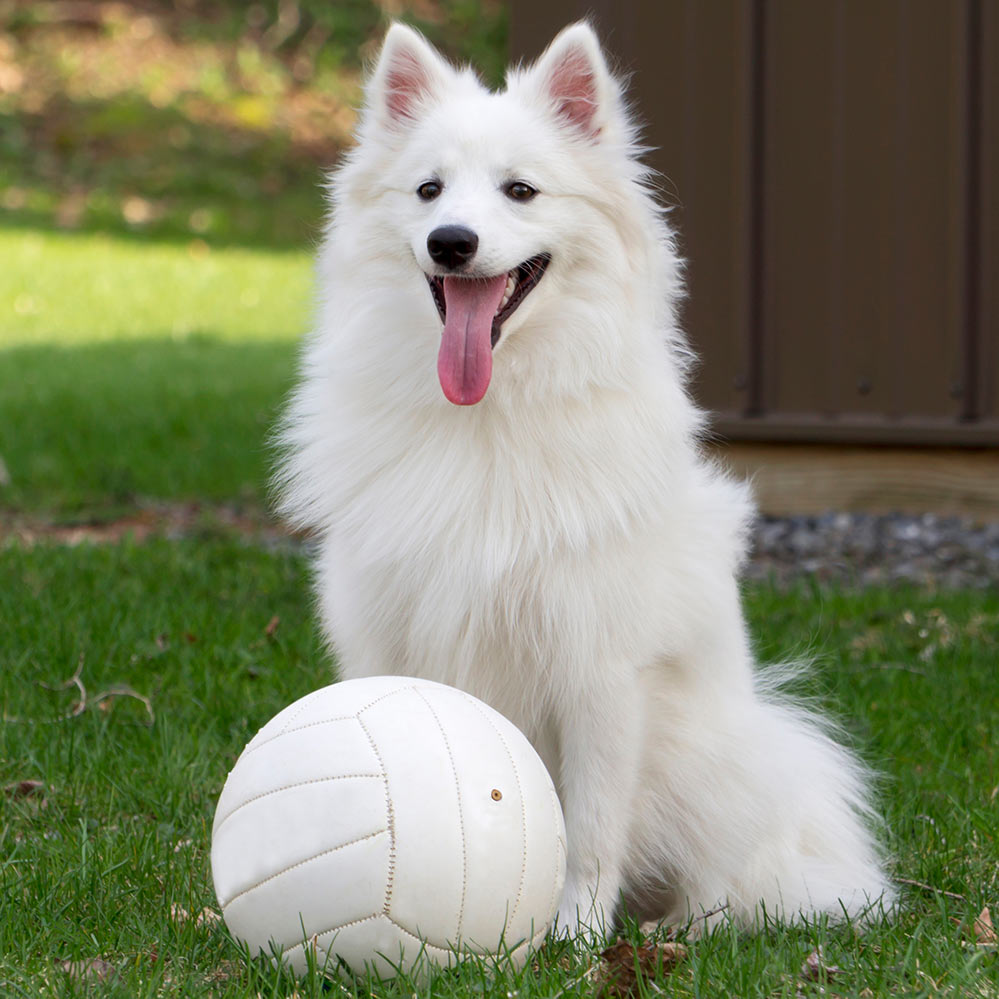
American Eskimo Dog Facts!
- The name ‘American Eskimo Dog’ is a misnomer: The Indigenous people referred to as “Eskimos” did not develop the breed, nor was it developed in America.
- The Spitz is also found in black, chocolate and red, but it is unclear why the white variety was the most popular colour in the USA, and the only colour to attain official recognition in the standard.
- The UKC’s first recorded Spitz female was called “Patsy Pall” and the first male was “Rob Roy”.
- Pierre, an American Eskimo Dog/Spitz tightrope walker with the Barnum & Bailey Circus, was quite possibly America’s most famous performing dog of the 1930s.
- The breed has been depicted in artworks from as far back as the mid 1700’s (although at that time they were known as “German Spitz”).
- Eskies are often mistaken for the Samoyed – another Spitz breed with a beautiful, long white coat and black pigmentation around the eyes, mouth and nose – but in fact they are two distinct breeds with very different temperaments.
Free engraved pet ID tag on sign up3
Customer Satisfaction
21 day cooling off
Easy to use Pet Portal

GapOnly® in vet claims
FURTHER INFORMATION
American Kennel Club: https://www.akc.org/dog-breeds/american-eskimo-dog/
American Eskimo Dog Club: https://aedca.org/home.php

